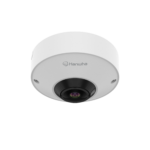2024.11.22
Why Pulp & Paper Manufacturers Should Invest in AI-enabled Video Surveillance Systems

Beyond improvements in security and threat detection, the right AI video surveillance system can help pulp and paper companies in many other ways.
Manufacturers can turn these investments into valuable business intelligence that maximizes productivity, reduces operational risks, and simplifies compliance and accurate reporting with all industry and safety regulations.
Enhancing Equipment Durability Via Proactive Health Monitoring
Competition in the pulp and paper industry is fierce.
Tight production timelines are commonplace, and companies around the world often use low margins as a way to pursue and win new business. Raw materials costs always seem to be on the rise. And, there is a massive global talent shortage, significantly impacting nearly every region that has major pulp and paper manufacturing.
As a result, to maintain profitability and stay ahead of the competition, manufacturers need to optimize equipment performance and longevity. Today’s advanced AI-enabled video surveillance solutions can play a vital role in limiting unplanned downtime.
For critical, heavy-duty plant equipment – like hammer mills, pulpers, logging and screening machines, rollers, and bleaching towers – Hanwha Vision’ s AI radiometric thermal cameras are an ideal solution for preventative maintenance. With extreme monitoring ranges of (-40℃/-40℉ to 550℃/1002℉), they can provide early warnings of fire or other potentially hazardous conditions.

Temperature changes are often the earliest warning sign of current or future equipment problems.
If overheating occurs, AI radiometric thermal cameras can immediately spot it, with sensors then alerting production supervisors, who can take the necessary action before a more costly breakdown occurs, and/or leads to unplanned downtime.
In addition, by consistently monitoring and logging temperature changes and/or abnormalities, maintenance professionals can determine if changes are needed to the existing equipment management procedures.
For example, should component and system checks happen more frequently? Should the number of operation hours between fluid interval changes (lubricants, greases, coolants ) be shorter or can they be extended further? Should different fluid types be used– such as switching to higherperformance synthetic lubricants that can better handle extreme temperatures than relying on conventional lubricants?
Improve Safety By Reducing Risks
There are many misconceptions about safety in the pulp and paper industry. Because industry 4.0 is changing things at a rapid pace.
For example, in the past 20 years, pulp and paper mills have gone from needing, on average, one process control engineer per machine to one per site, according to ABB, a leading global industrial manufacturer headquartered in Västerås, Sweden, and Zürich, Switzerland.
Manufacturers are also increasingly leveraging solutions that deliver more comprehensive automation.
Using advanced technologies to curtail unsafe forklift operations is another valuable way manufacturers can improve overall safety. For the pulp and paper industry – and in other manufacturing environments – this remains one of the leading causes of workplace injuries and death. In many countries, it’s estimated that forlikts are involved in more than 5% of workplace-related serious injuries and more than 10% of workplace-related deaths.
To help address this issue, there are increasingly sophisticated and precise AI applications that are being incorporated into intelligent surveillance cameras. This type of integrated solution can help manufacturers to better protect employees, and dramatically reduce forklift-caused accidents, compliance infractions, and costly legal expenses.
Hanwha Vision recently introduced a Smart Factory solution set that combines our proven video surveillance technologies with proprietary software and AI analytics to monitor every part of a forklift’s operations.

With various sensors and alarms, it immediately alerts forklift operators and security professionals when encountering hazardous environments or unsafe driving conditions.
If a driver is going over the pre-designated safe forklift speed limits, he/she will receive an instant notification and warning to slow down. These alerts are logged and sent to security professionals who are monitoring the factory or plant floor either onsite, or from a centralized, remote location, enabling them to have immediate access to this information at all times.
If a forklift is parked in the wrong location, similar alarms will be triggered. Also, valuable Proximity Detection notifications ensure that there is always a safe distance maintained between a person and a forklift, between multiple forklifts, or a forklift and a piece of equipment or structure, like tall columned shelving stacks.
Quality Control
AI-enabled video surveillance can support quality control efforts, by precisely analyzing products for visual defects and other inconsistencies, leading to higher conformity to product standards and less waste. Common defects that video surveillance will spot include creases, fiber clumps, discoloration, printing offsets, and more.
Simplify Compliance & Reporting
Maintaining and reporting on compliance with crucial maintenance, operating, and sustainability-related regulations, is essential for successful manufacturers. However, it’s often a time-consuming process.
By providing detailed logs and reports of monitored environments, AI-driven surveillance systems can help companies enhance their compliance efforts and simplify compliance reporting efforts.

The real-time alerts can identify if employees are using the right Personal Protective Equipment (PPEs) and following key safety requirements, like Occupational Safety & Health Administration (OSHA) 1910.261, or document the company’s full compliance with environmental regulations, such as the Clean Air Act (CAA), Resource Conservation and Recovery Act (RCRA).
Automated reports, with detailed transparency and accountability, enable manufacturers to accurately assess their team’s overall compliance with these industry and safety regulations, and reduce time and money spent on compliance reporting efforts.
CLOSE:
Succeeding in the pulp and paper industry is never easy for any manufacturer. The demanding production timelines, elevated raw material costs, and the increasing shift to digital communications by companies and consumers, are just some of the challenges.
However, the industry’s future has many bright growth spots, including a growing global population, the rise in last mile deliveries, and heightened demand for the industry’s recyclable mono-material films and compostable packaging solutions, which provide eco-friendly alternatives to fossil-based materials and single-use plastics.
To capitalize on these trends and stay ahead of the competition, manufacturers would be well served to consider how their investments in AI video surveillance systems can deliver the business insights they need to operate safer, smarter, and more productively.


